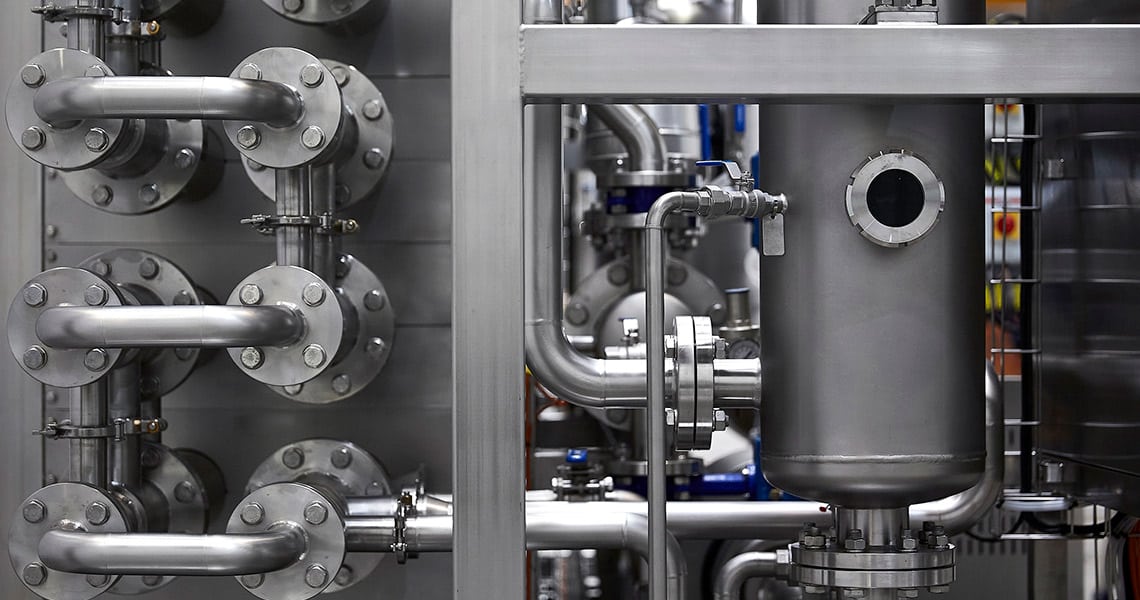Reducing Your Carbon Footprint With Heat Exchangers

Around the world, private companies and government agencies are looking to reduce the greenhouse gas (GHG) emissions associated with their activities, including increasing their use of renewable and low-carbon energy sources and improving the energy efficiency of their processes.
Energy efficiency represents more than 40% of the emissions abatement needed by 2040, according to the International Energy Agency (IEA) Sustainable Development Scenario. Furthermore, ‘According to the IEA Efficient World Scenario, currently existing cost-effective technologies are sufficient to double global energy efficiency by 2040.’
Heat exchangers are just such an existing, cost-effective technology. Technologically proven for over a century, developments in materials and design mean that many types of heat exchanger, such as those utilising corrugated tubes and energy recovery, are now more energy efficient than ever before.
The biggest efficiency benefits of heat exchangers come about when they facilitate the reuse of as much of the thermal energy generated or used during a process (such as heating, cooling, pasteurization, evaporation, etc.) as possible. Distributing heat more efficiently throughout production facilities has been recognised a key factor in improving efficiency and reducing greenhouse gas (GHG) emissions in industries including as chemical refining, water treatment and manufacturing.
Examples of Heat Recovery with Heat Exchangers
The first typical example can be seen in food production, if we imagine a product that needs to be pasteurized. The product needs to be heated to the necessary temperature to achieve pasteurization, then rapidly cooled to maintain shelf life and quality. This is achieved through the use of two heat exchangers. The first uses hot water to raise the temperature, while the second uses chilled water to cool the product down again. In the second process, the temperature of the cooling water is increased significantly. There are three options for dealing with this heated water: discard or discharge it elsewhere; cool it again for re-use; or cool it again for re-use but use some of the heat it contains towards the heat required for the pasteurization phase. This third option utilizes heat recovery or heat regeneration, reducing the amount of new energy required for the subsequent first heating phases.
A second example shows how heat left over from one process can be recaptured to be used elsewhere. Many anaerobic digestion (AD) plants use heat exchangers to pasteurise the digestate produced during the AD process, so that it can be sold as an agricultural fertilizer. The ‘surplus’ heat which is generated after the system has been running for two hours is used to preheat the digestate, reducing total heat load and improving overall plant efficiency by increasing the amount of generated energy, which is available for export or other uses, as opposed to being required for pasteurization.
Finally, combining multiple heat exchanges can often provide the greatest energy benefits, for example, in a multi-effect evaporation system such as the HRS DCS Digestate Concentration System. This uses heat exchangers and evaporation to reduce the volume and increase the concentration of sludges and digestate. The first evaporation stage heats liquid digestate and uses a cyclone separator; the steam produced from this first cycle (usually available at 70˚C) is then used as the heating media for the second effect, whereby the process is repeated. The subsequent steam (usually available at 60˚C) is then used as the heating media for the third cycle. The number of effects is determined by the level of dry solids required and the amount of surplus heat available, up to a maximum of four cycles. After the final stage, the steam is condensed back to water and this heat is used to pre-heat the incoming product before the first stage of evaporation.